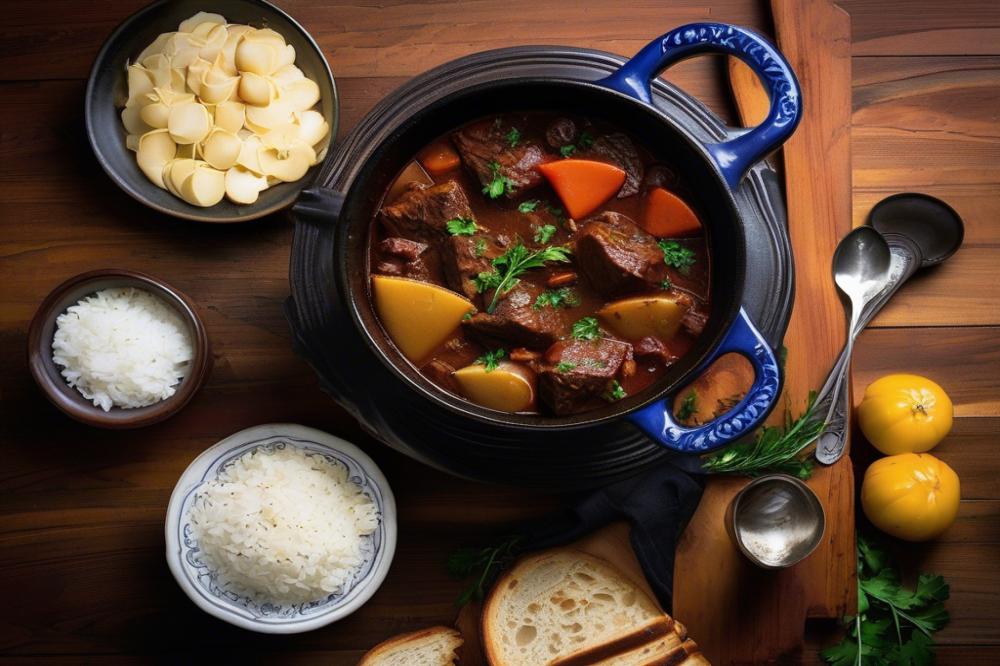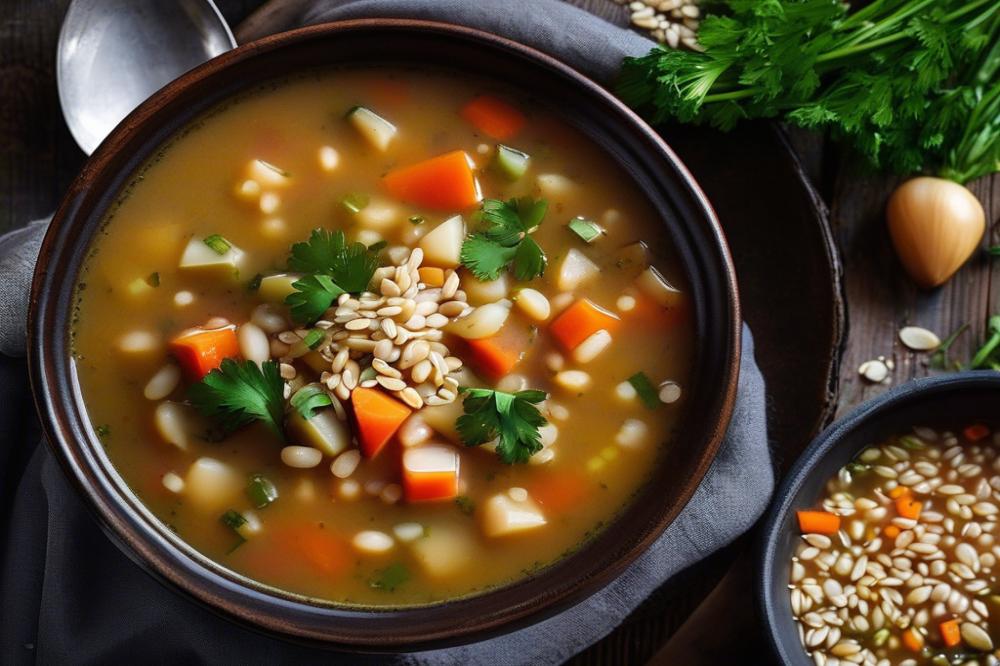How to Cook Stifado Traditional Greek Beef Stew
Overview of Stifado
Stifado is a beloved traditional Greek Beef Stew, rich in flavors and history. This dish highlights the importance of slow-cooking, a method cherished in Greek cuisine. When prepared properly, every ingredient melds into a delightful combination, creating a Mediterranean dish worth savoring.
The Art of Slow-Cooking
Slow-cooked meals shine in many cultures, but in Greece, they hold a special place in the heart. Time transforms tough cuts of meat into tender, juicy bites. Dishes like Stifado showcase how patience brings out the best in food. With each hour that passes, the flavors deepen, inviting everyone to sit around the table.
Comfort Food Connection
Comfort food often evokes feelings of warmth and nostalgia, and this beef stew does just that. The combination of onions and red wine creates a rich sauce that clings to the meat, making each bite satisfying. People enjoy hearty meals like this, especially during colder months or family gatherings. With the use of Greek herbs, Stifado becomes more than just a meal; it evokes a sense of home.
What is Stifado?
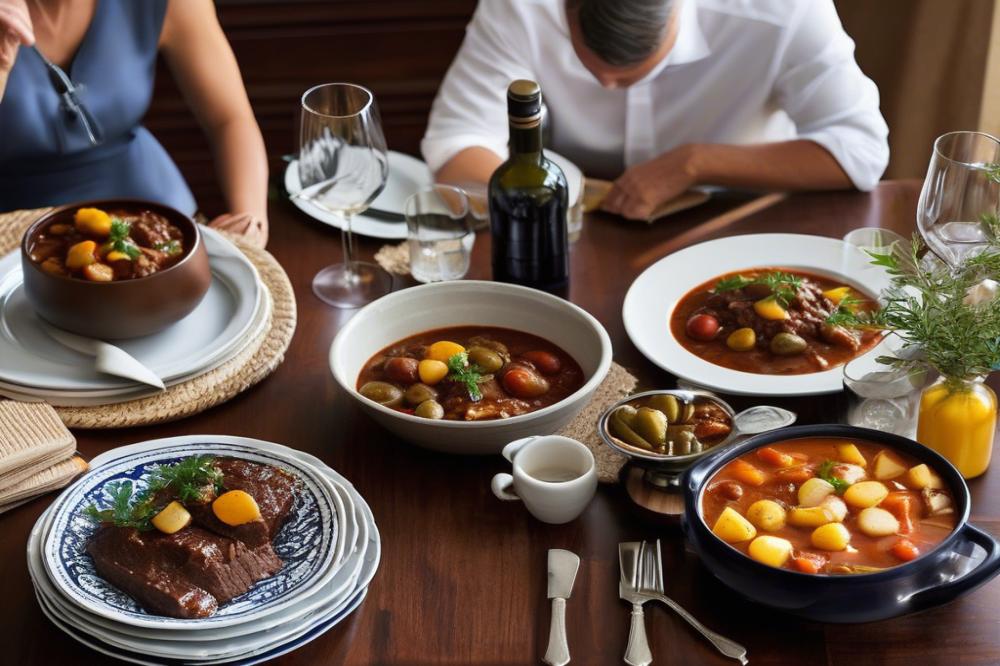
Definition of Stifado
Stifado is a traditional Greek beef stew. It is known for its rich, complex flavors. This Mediterranean dish usually features tender pieces of meat simmered in a savory sauce. Ingredients include onion, red wine, and various Greek herbs that enhance its taste.
Historical background and cultural significance
The origins of this dish trace back to ancient Greece. Over the centuries, recipes were passed down through generations. Stifado became popular among different regions. Each had its own interpretation, adding to the vibrant tapestry of Greek cuisine. This dish represents comfort food for many families. It holds a special place on the dinner table during gatherings and celebrations.
Description of flavors and ingredients traditionally used
Flavors in stifado are both aromatic and bold. A blend of sweet and savory delights the senses. Onions are often caramelized, adding depth to the dish. Red wine serves as a base for the stew, infusing it with richness. Herbs such as cinnamon and bay leaves are typically used. These bring warmth and a fragrant touch. A variety of root vegetables may also accompany the beef, enhancing the overall heartiness of the meal. Each ingredient contributes to a comforting and satisfying experience.
Ingredients for Stifado
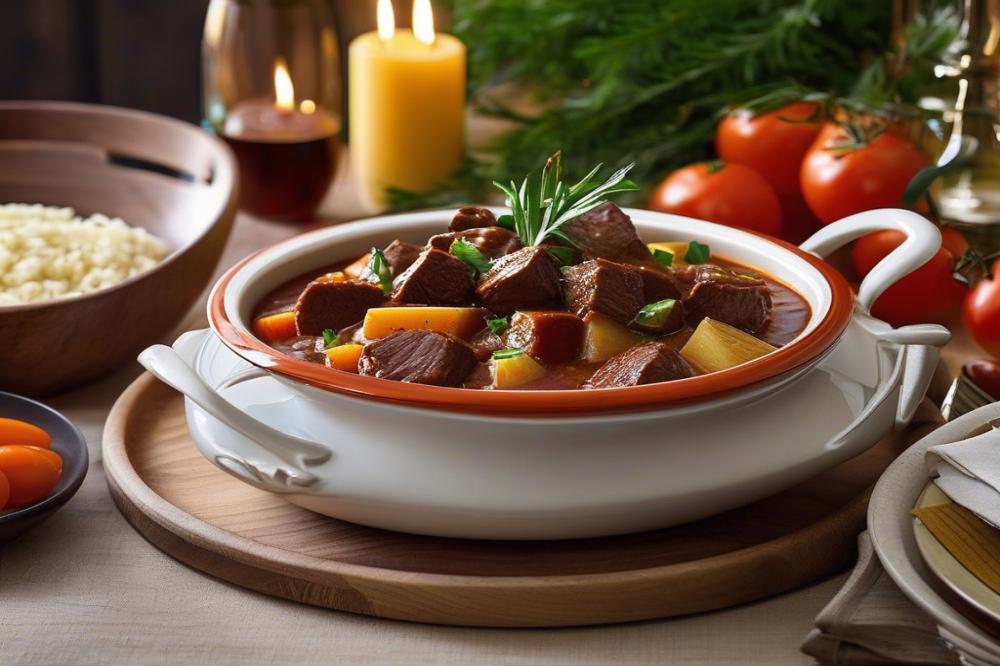
To create a delicious Greek beef stew, gather the following ingredients. Each element contributes to the rich flavors and comforting nature of this traditional recipe. Here’s exactly what you need:
- 800g beef (chuck or stew meat)
- 500g small onions (or pearl onions)
- 2 cloves garlic (minced)
- 400ml red wine
- 2 cups chopped tomatoes (canned or fresh)
- 2 bay leaves
- 1 teaspoon cinnamon
- 1 teaspoon allspice
- 4 tablespoons olive oil
- Salt and pepper to taste
Nutritional Information
Understanding the nutritional makeup of each ingredient can enhance your appreciation for this Mediterranean dish. Here’s a breakdown:
- Beef: Approximately 200 calories, 28g protein, 0g carbs, 10g fat. Rich in iron and B vitamins.
- Small onions: Around 40 calories, 1g protein, 9g carbs, 0g fat. High in vitamin C and antioxidants.
- Garlic: About 9 calories, 0.4g protein, 2g carbs, 0g fat. Contains vitamins B6 and C.
- Red wine: Roughly 120 calories, 0g protein, 4g carbs, 0g fat. Contains antioxidants like resveratrol.
- Tomatoes: Approximately 40 calories, 2g protein, 10g carbs, 0g fat. High in vitamins A and C.
- Bay leaves: Virtually negligible calories. Provides aromatic flavor and potential digestive benefits.
- Cinnamon: About 6 calories, 0g protein, 2g carbs, 0g fat. Contains anti-inflammatory properties.
- Allspice: Roughly 5 calories, 0g protein, 1g carbs, 0g fat. Contains several essential oils beneficial for health.
- Olive oil: Around 120 calories, 0g protein, 0g carbs, 14g fat. Rich in monounsaturated fats and vitamin E.
Comfort food enthusiasts will find joy in this hearty meal. When combining these ingredients, you create a dish steeped in Greek cuisine tradition. The slow-cooked process infuses the beef with flavors from garlic, onions, and aromatic Greek herbs. Hence, this beef stew becomes not just a meal, but an experience that captures the essence of Mediterranean cooking.
Cooking Instructions for Stifado
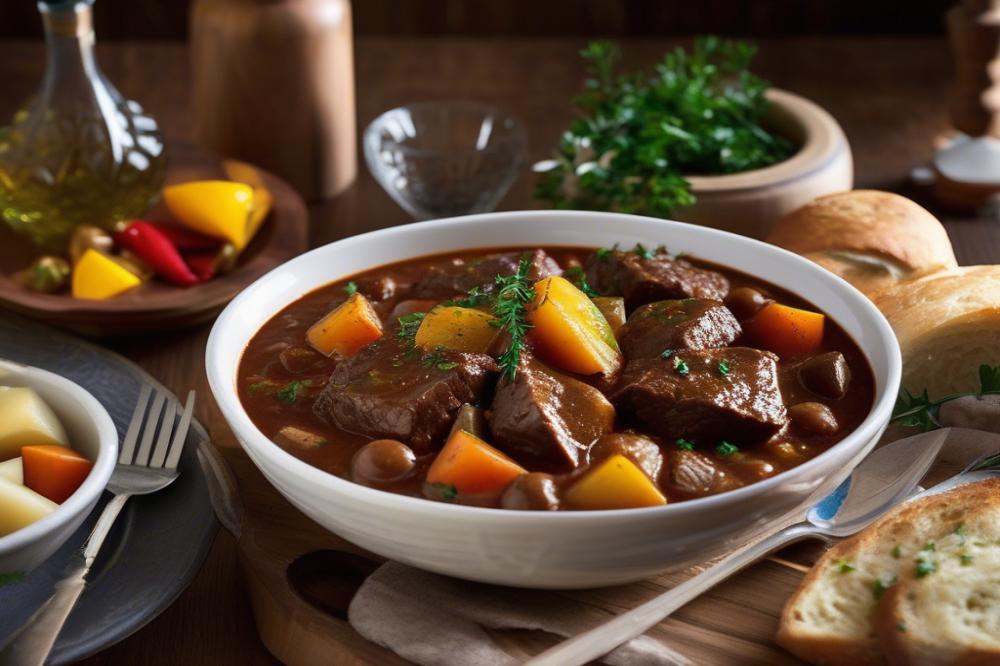
This traditional dish, a delightful Greek beef stew, requires attention but rewards you with rich flavors. Start by preparing the beef. Trim any excess fat from the meat and cut it into chunks. Aim for uniform pieces; this helps with even cooking.
Next, it’s time to brown the meat in olive oil. Heat a large pot over medium-high heat and add a generous drizzle of olive oil. When the oil is hot, carefully add the beef chunks. Brown each side for several minutes. This step builds a deep, savory base for the stew.
After browning the beef, remove it from the pot. Use the same pot to cook diced onions and minced garlic until they become soft and fragrant. Onions lend sweetness, while garlic adds wonderful depth to the dish. Stir occasionally to avoid sticking and ensure even cooking.
Once the onions and garlic are ready, pour in some red wine. This Mediterranean dish shines with the right choice of wine. Let it simmer while scraping the bottom of the pot. This process releases the fond, enhancing the overall flavor.
Next, it’s time to incorporate crushed tomatoes and your selection of Greek herbs, such as oregano and bay leaves. These ingredients contribute to the robust taste. Stir everything together, ensuring that the meat and vegetables mix well.
The key to this beef stew is a slow-cooking process. Return the beef to the pot and add water or broth until the meat is covered. Cover the pot, reduce the heat to low, and let it simmer. This can take anywhere from two to three hours, but feel free to adjust timing based on your preferences. The slower it cooks, the more tender the beef becomes, making it comfort food at its finest.
As you near the end of cooking, taste the stew. This is your moment for final seasoning adjustments. Add salt, pepper, or even a pinch of sugar if the acidity is too strong from the tomatoes. This small step can elevate the flavors and make your hearty meal even more enjoyable.
Tips and Variations

Enhancing Flavor
Adding extra herbs and spices can elevate your beef stew to another level. Consider incorporating cinnamon, bay leaves, or allspice for a unique twist. Fresh parsley or dill provides a fresh contrast to the richness of the dish. Don’t forget about using fresh garlic or even shallots. These additions can transform a comforting meal into something memorable.
Cooking Methods
When it comes to cooking Stifado, you have options. A slow cooker is great for achieving tender beef through gentle cooking. Just set it and forget it. On the other hand, using a stovetop allows for careful monitoring and quick adjustments while cooking. This method often creates a lovely caramelization on the ingredients. Choose whichever suits your schedule and cooking style best.
Suggested Side Dishes
Stifado pairs wonderfully with traditional recipes like crusty bread or rice. A simple green salad can add a nice crunch and lightness to your meal. Roasted vegetables also make a great side; they bring in flavor and color. No matter what you choose, accompany your stew with something that complements this hearty meal.
Wine Pairing Recommendations
A rich red wine graces any Mediterranean dish quite well. Opt for a Merlot or a Chianti to enhance the flavors in your stew. These varieties match the depth of the dish beautifully. If you prefer something lighter, a Pinot Noir can also be a great choice. Experiment with different wines to find what you enjoy most.
The Role of Stifado in Greek Cuisine
Stifado holds a special place in the heart of Greek families. This slow-cooked beef stew, filled with tender meat and sweet onions, is more than just food. It serves as a centerpiece for family meals and gatherings. Sharing this Mediterranean dish brings loved ones together, fostering connections and memories.
When we compare this dish to other traditional recipes in Greek cuisine, it stands out. Each plate of food tells a story. For instance, moussaka and pastitsio also offer hearty meals, but they differ in flavor and preparation. Stifado’s rich taste, combined with red wine and Greek herbs, sets it apart as a comfort food truly beloved by many.
The Mediterranean diet plays a significant role in health. With its focus on wholesome ingredients, it promotes well-being and longevity. Dishes like Stifado not only satisfy the palate but also deliver nutritional benefits. This diet emphasizes fresh vegetables, healthy fats, and lean meats, making it a great choice for anyone looking to eat better.
Enjoying a bowl of this savory stew warms the soul. It’s perfect for cool evenings or family celebrations. The process of slowly cooking the dish fills homes with delightful aromas. Gathering around the table to share stories over Stifado brings people closer together. After all, good food and good company are what life is all about!
Final Thoughts on a Hearty Dish
This traditional Greek beef stew is a true embodiment of comfort food. Rich flavors meld beautifully with tender meat, creating a meal that warms both body and soul. Aromatic spices provide a signature taste that stands out in any culinary repertoire. Each bite tells a story of heritage and love for good food.
Feeling inspired? Trying your hand at making this dish can be a rewarding experience. Cooking can bring joy, especially when creating something meaningful. Gather your ingredients, follow the steps, and enjoy the process. You might discover a new favorite meal that can be shared with family and friends.
Embracing traditional recipes like this one not only fills the stomach but also connects us to our cultural roots. Preparing meals passed down through generations allows us to experience history in the most delicious way. It’s comforting to know that by cooking, we honor those who came before us while creating new memories with those we love.

